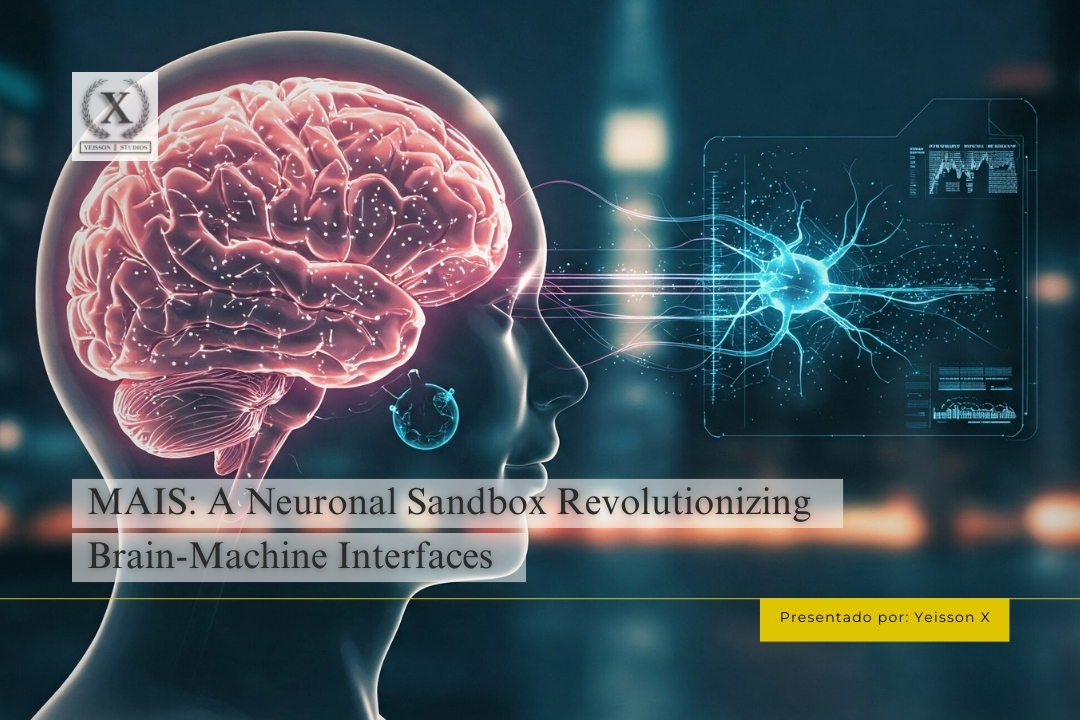In a laboratory in Wenzhou, China, a multidisciplinary team has developed what could be the next leap in the interaction between biological and artificial systems: the Multi-Agent Interactive System (MAIS), a platform combining human brain organoids with high-density microelectrode arrays and artificial intelligence algorithms to simulate and modulate neural networks in real time. Detailed in a preprint on bioRxiv, this advancement not only challenges current paradigms of brain-machine interfaces (BMIs) but also opens an unprecedented window to study neurological diseases, develop adaptive neuroprosthetics, and explore the dynamics of biological intelligence.
The Crisis of Static Interfaces
Traditional BMIs, such as those enabling mind-controlled prosthetics, operate under rigid digital architectures. They translate neural signals into predefined commands but ignore a fundamental truth: the human brain is a dynamic system shaped by synaptic plasticity and self-organization. This incompatibility between static design and biological complexity limits their long-term efficacy and ability to address complex disorders. MAIS responds to this problem with a radical approach: instead of imposing artificial rules, the system learns from the neural network and adapts to its natural evolution.
Organoids, Electrodes, and Chips: The Pillars of MAIS
At MAIS’s core lie cerebral organoids—spheres of neural tissue grown from human pluripotent stem cells. These organoids not only replicate cortical structure but develop spontaneous electrical activity, synaptic connections, and synchronization patterns akin to an immature brain. The team, led by Jianwei Shuai and Lixiang Ma, integrated these organoids with high-density microelectrode arrays (HD-MEAs), capable of recording and stimulating thousands of neurons simultaneously.
Yet the true breakthrough lies in the closed-loop feedback design. Each organoid is fused with a computational chip that processes its activity in milliseconds. If a neural network exhibits hyperactivity—as in an epilepsy model—the system delivers targeted electrical pulses to suppress it. Conversely, if it detects patterns linked to disorders like autism (characterized by low connectivity), it applies stimuli that reinforce synapses. This bidirectional dialogue is guided by reinforcement learning algorithms inspired by brain plasticity, where “rewards” (synchronous stimulation) strengthen connections and “punishments” (chaotic signals) weaken them.
From Poker Games to Recalibrating Pathological Networks
To demonstrate MAIS’s versatility, researchers trained organoids in a virtual card game. In solo mode, an organoid acted as a player, selecting cards based on spike intensity. In competitive mode, two organoids—P1 and P2—faced off while a third, the “judge,” determined the winner based on its electrical activity. The results were striking: after 240 rounds, organoid judges achieved 68% accuracy compared to a computational algorithm’s 92%, but with a critical advantage—their learning capacity improved with training, a feat impossible for conventional software.
This experiment is more than a game. It simulates how MAIS could operate in medical scenarios. For example, a “doctor” organoid trained on healthy patient data could compare its activity to a “diseased” organoid (modeled with Huntington’s or autism mutations) and apply personalized stimuli to correct deviations. In preliminary trials, treated organoids showed a 22% increase in network synchronization, approaching normative patterns.
Plasticity vs. Centralized Control: A Paradigm Shift
Current neuromodulation systems, like deep brain stimulation, rely on fixed protocols: same electrodes, frequency, and intensity. MAIS shatters this mold. It uses functional connectivity maps derived from the Spike Timing Tiling Coefficient (STTC), an algorithm identifying “sender” neurons (signal initiators) and “receiver” neurons (target regions). By stimulating “sender” areas linked to problematic “receiver” zones, the system induces specific plastic changes.
In a key experiment, proximal stimulation to STTC connections increased signal amplitude in target areas by 40%, while distal stimulation proved ineffective. Furthermore, when game rules were inverted (rewarding low cards instead of high), organoids adapted their responses by 19.7%, demonstrating rudimentary cognitive flexibility. This suggests MAIS doesn’t just read brain activity—it converses with it, leveraging the brain’s innate capacity for reorganization.
Limitations and Ethical Challenges
Despite its potential, MAIS faces hurdles. Current organoids lack vasculature, limiting their size and maturity. Their activity, though complex, doesn’t equate to human consciousness but raises ethical dilemmas: What level of autonomy is acceptable in a biological-artificial system? The team emphasizes that their organoids lack perception or suffering but acknowledges the need for ethical frameworks as the technology evolves.
Another challenge is scalability. Connecting dozens of organoids—each with unique dynamics—requires algorithms to manage interference and synchronize stimuli without system collapse. Early trials with three organoids revealed self-regulation, with networks prioritizing mid-range connections (STTC 0.3–0.6) and pruning weaker or chaotic ones. This hints that multi-agent systems could self-organize, akin to a modular brain.
The Future: From Organoids to Living Neuroprosthetics
MAIS isn’t just a research tool. Its creators envision tangible applications:
- Disease Modeling: Using organoids with specific mutations to test drugs or personalized stimulation.
- Adaptive Neuroprosthetics: Implanting chips that learn from post-injury brain plasticity, adjusting to anatomical changes.
- Biohybrid Intelligence: Combining human neural networks with AI to solve complex problems, like noise-resistant pattern recognition.
In a philosophical twist, MAIS also challenges what defines “artificial” intelligence. If a system uses evolving human neurons, where does biology end and synthetic begin? The authors avoid speculation but admit their platform blurs these boundaries, bringing science fiction closer to reality.
For now, the work remains in the lab. The next step is integrating organoids from distinct brain regions—cortex, thalamus, basal ganglia—to emulate full circuits. If successful, MAIS could become the first sandbox where biological and artificial intelligence not only coexist but coevolve.
Sources:
Chen, H., Chen, F., Chen, X., Liu, Y., Xu, J., Li, J., Bao, X., Chen, Y., Sun, H., Jiang, J., Ye, F., Su, J., Yang, G., Ye, F., Wang, Z., Liu, L., Hexige, S., Li, X., Ma, L., & Shuai, J. (2025, March 22). MAIS: An In-Vitro Sandbox Enables Adaptive Neuromodulation via Scalable Neural Interfaces. bioRxiv. https://doi.org/10.1101/2025.03.15.641656


